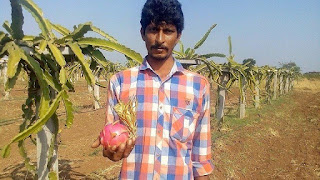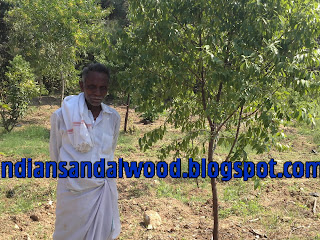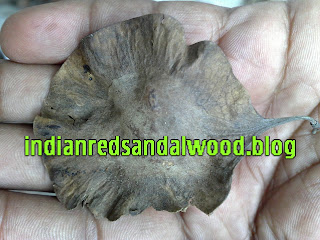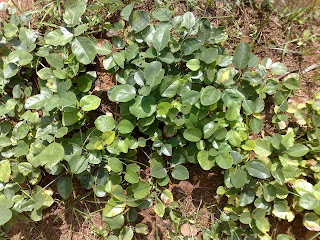DRAGON FRUIT CULTIVATION
A dragon fruit is the fruit of several cactus species, most importantly of the genus Hylocereus. It is native to South and Central America, belong to perennial epileptic plant. It is also commercially cultivated in Vietnam, Thailand, Malaysia, Israel as well as Sri Lanka.
Now dragon fruit is also popularizing in India. It can be cultivated low country wet zone, intermediate zone as well as dry zone with the irrigation facilities.
Three types of Dragon fruit species.
1.Red colour fruit coat with white colour flesh
2.Red colour fruit coat with red colour flesh
3.Yellow colour fruit coat with white colour flesh

Red dragon fruit
Uses
Dragon fruit is important as a fruits as well as ornamental plant. Ripen fruits can be used directly to consume. Also it can be used for produce jam, ice cream, jelly, fruit juice as well as wine. Dragon fruit buds can be prepared as a curry.
Dragon fruit increases the digesting power of the foods. Also it has ability to control cancer, diabetics, anti ageing,high cholesterol as well as blood pressure.
Climatic Conditions
Dragon fruits can tolerate poor soil conditions and temperature variations.
Tropical climate is good for dragon fruit cultivation. The optimum temperature range is about 20 - 30 oC. Also it needs about 500 1500mm annual rainfall with alternate dry and wet climatic condition. It need good sunlight, but not suitable for long period. At that time shading is important.
Soil and Water ::Good drainage system is important to dragon fruit cultivation. 10-30% sandy soils with organic matters provide good condition for plant growth. Sandy soils also suitable for dragon fruit cultivation
Planting
Planting space is about 2 x 2m.
Pit size is about 60 x 60 x 60cm. These pits are filled by top soil, decomposed cow dung or compost with 100g of super phosphate. To improve the drainage, add small brick pieces and some amount of sand to bottom of the pit.

dragon plants
we can plant 1600 no's of plants in one Acre of land and 400 no's 0f concrete column to support the plant twigs. Four plants are planted on four sides of the poles. Dragon fruit needs support to up right growth. Immature stem must be tied to that column. But thereafter aerial roots developed and bound to column. Lateral shoots must be limited and 2-3 main stems are allowed to grow. Because lateral shoots must be removed time to time. It is important to arrange round metal/concrete frame to maintain balanced shrub. Because it spread the hanging shoots balance way.
Dragon fruit flower bloom at night and it is off white in color. Flowering will initiate at April/ May period. Due to beauty of the flower, these flowers also named as Queen of night, Moon flower and Nobal woman. Fruits will be matured 30 -35 days after flowering. Fruiting period will continue up to November. Harvesting can be done six times with in this period. Outer cover of immature is in bright green colour. It will become red in colour with ripening. Proper time of harvesting is after four days of colour changing. But for export purpose, it is important to harvesting a day after colour changing.
FERTILIZER APPLICATION
Dragon fruit forest related plant belong to family Cactaceae. Therefore it needs water and fertilizer. It is newly introduced plant for cultivation. Thus has not recommended fertilizer mixture yet. But good result can be obtained by applying below mentioned fertilizer mixtures
Organic Fertilizer Organic fertilizer is very important to proper growth and development of dragon fruit plant. Be Apply 15kg of organic fertilizer per plant and increase the amount by 2kg per year up to 20kg.
Inorganic Fertilizer
For vegetative stage
Apply below mentioned fertilizer mixture each four months.
Urea - 72 g ;; Super phosphate - 88 g ;; Muriate of potash - 40 g;
For bearing trees
It is important to apply low amount of nitrogen and high amount of potash for obtain ample yield. Apply below mentioned mixture per plant before the flowering (April) fruit developing stage (July/ August) as well as after the harvesting (December).
Urea - 50 g;; Super phosphate - 50 g;; Muriate of potash - 100 g
It is import to increase the applied amount of fertilizer by 225g per year up to 1.5 kg.
Water Management:: Irrigation is needed for normal growth and yield of the plant in dry season. Also, need to apply irrigation system in dry zone. Drip irrigation is recommended
YEILD:: Average fruit weight is about 300-600 g in intermediate zone. Average yield is about 10000kg per ha.
COSTING OF PLANTATION: in INR
1) Each plant cost RS: 100=00 i.e.; 1600x 100 = 160,000=00
2) Pit digging, 400 no's columns, drip, fertilizers..etc = 240,000=00TOTAL = 4,00,000=00
PROFIT :
Yield starts after one year ( 1-2 tons) per acre and yields 3 to 6 Tons from second year onwards. It may increase upto 10 Tons if proper care is taken during vegetative and fruiting stages by applying proper proportions of both organic and inorganic fertilizers.
now one kg of Dragon fruits cost RS 100 =00
6000 Kgs X 100 = 6,00,000=00
Farmer can get easy returns early by cultivating Dragon fruits. He can enjoy high returns with good
management methods for not less than 20 to 25 years.

Dragon fruit farming









